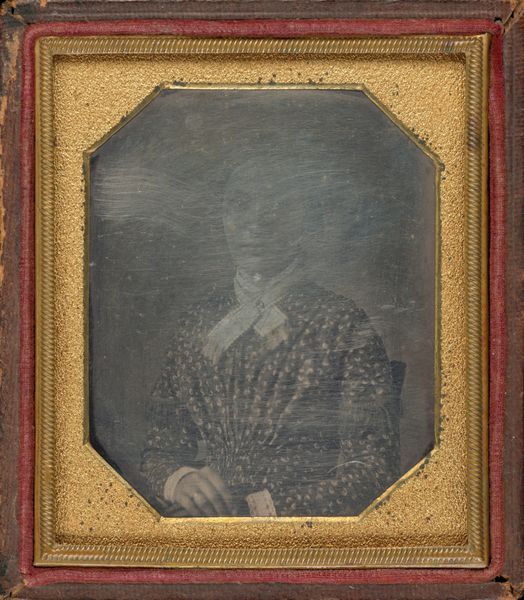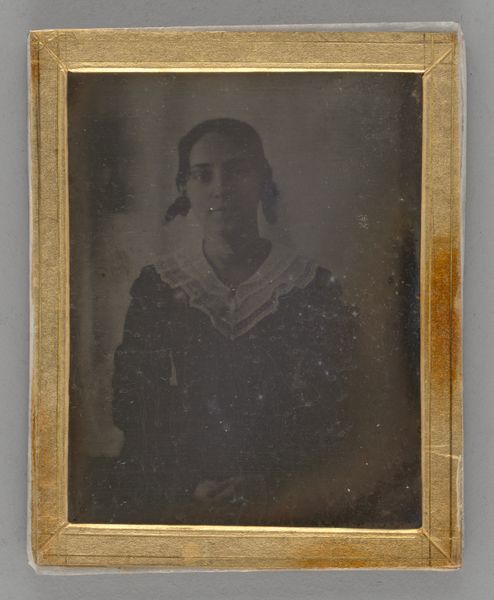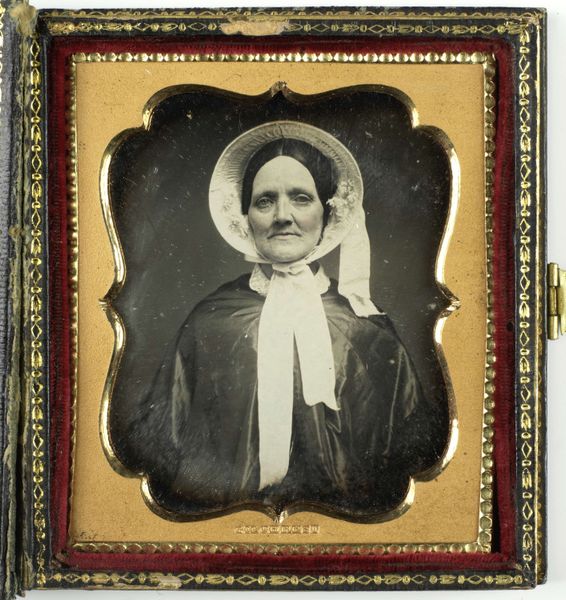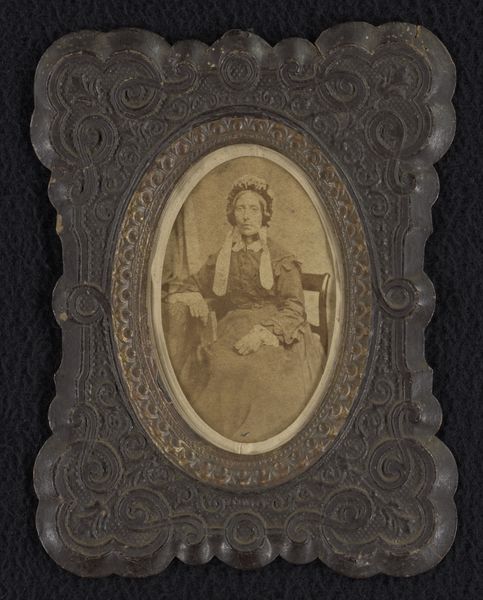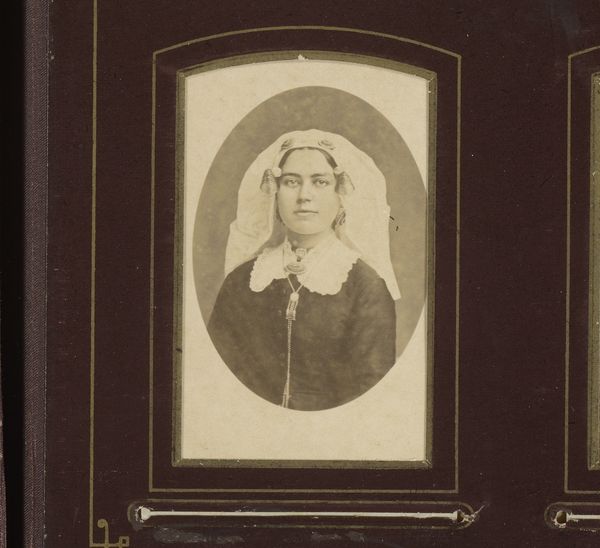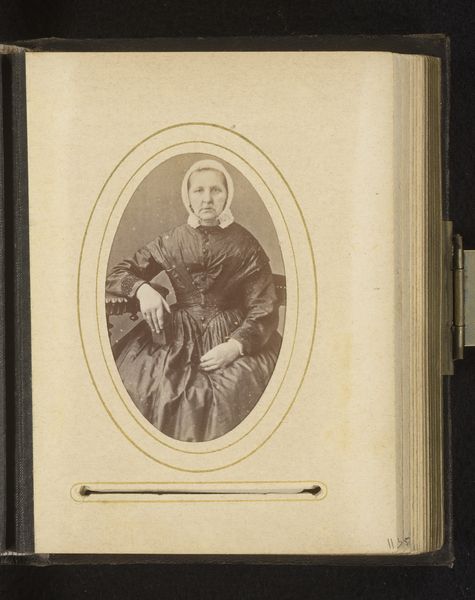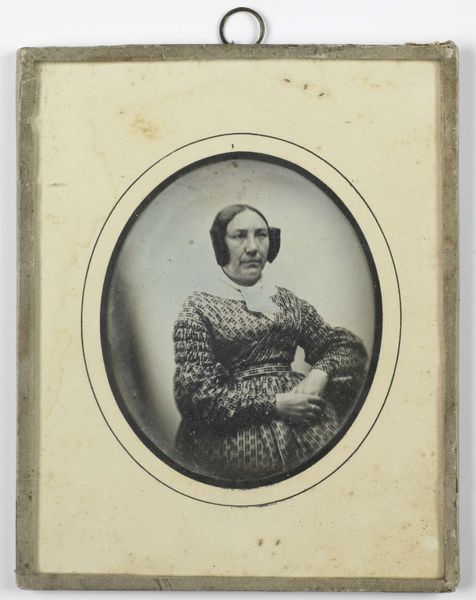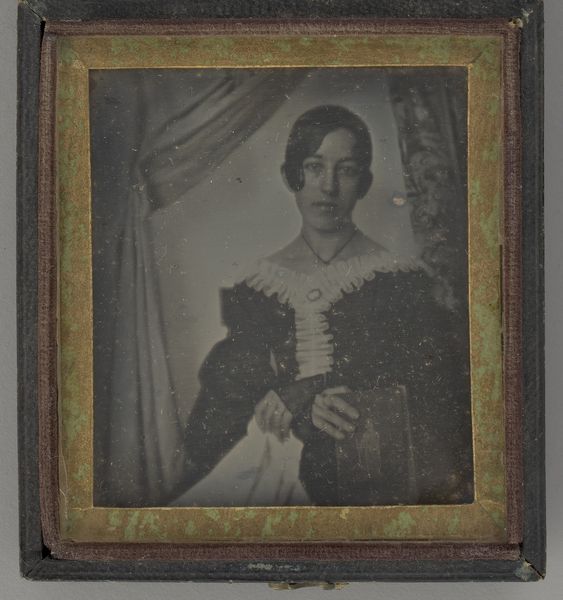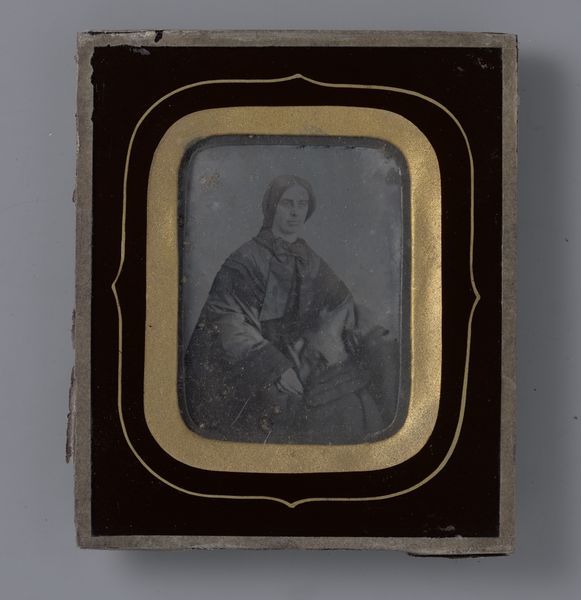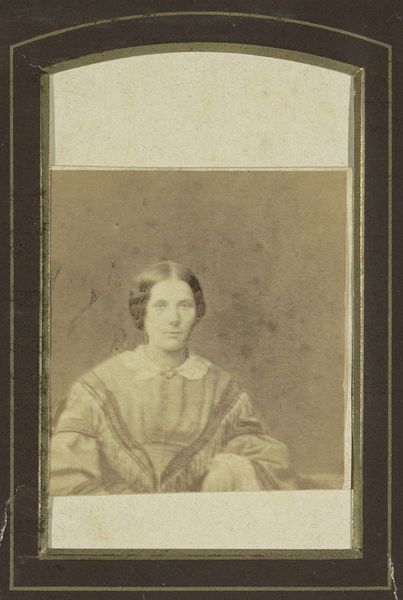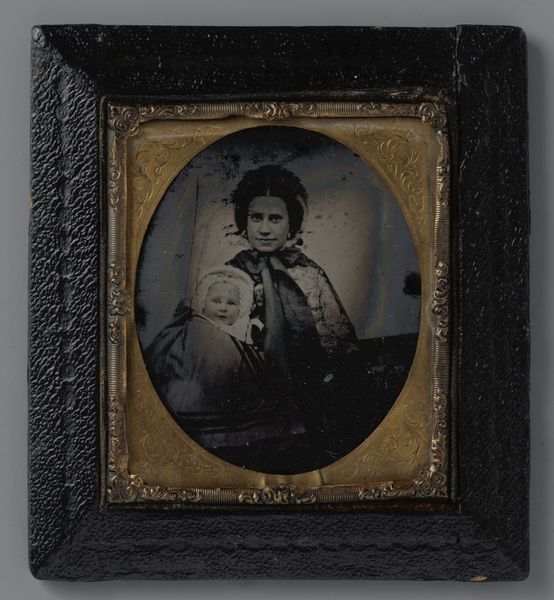
daguerreotype, photography
#
portrait
#
16_19th-century
#
daguerreotype
#
photography
#
ancient-mediterranean
#
romanticism
Dimensions: 5.9 × 5.3 cm (2 3/8 × 2 1/8 in., each plate); 14 × 6.3 × 1.2 cm (each open case); 7 × 6.3 × 1.3 (each case)
Copyright: Public Domain
This portrait of an unknown woman is a daguerreotype, one of the earliest forms of photography, and was made by an anonymous artist. Daguerreotypes are created on a silver-plated copper sheet, polished to a mirror finish, then treated with chemicals to make it light-sensitive. The plate is exposed in a camera, and then developed over mercury fumes. This process gives daguerreotypes their characteristic silvery, mirror-like surface and incredible detail. Look closely, and you’ll see the texture of her dress and the subtle expression on her face. The final image is incredibly fragile, needing protection from the air, which is why it is presented in a sealed case. The rise of photography democratized portraiture. No longer the preserve of the wealthy, a likeness could be captured relatively quickly and inexpensively. This example, though, reminds us of the labor involved in early photography, from preparing the plate, to carefully framing and posing the subject. It's a reminder that every image, even one that seems mechanically produced, has a human story behind it.
Comments
No comments
Be the first to comment and join the conversation on the ultimate creative platform.


